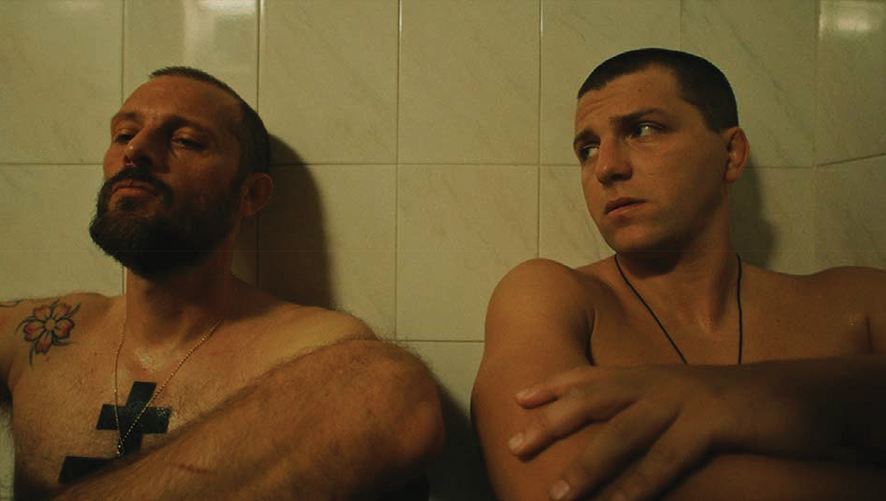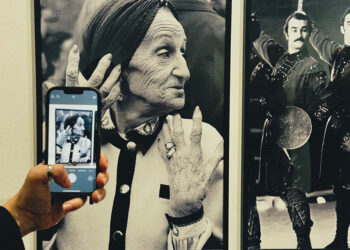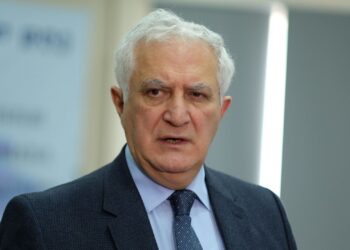On December 4th, at Amirani Cinema in Tbilisi, Akaki Popkhadze’s debut feature ‘In the Name of Blood’ captivated audiences as part of the European Forum session at the 25th Tbilisi International Film Festival. Uniquely, this screening stood out in a festival overshadowed by violent crackdowns on demonstrators and Georgia’s stalled European Union aspirations, which led to the cancellation of all films in the Georgian Panorama section. Yet, due to significant international commitments, the European Forum remained intact, allowing this gripping drama to shine through the chaos.
A Riveting Tale of Dualities and Identities
Akaki Popkhadze’s debut feature, In the Name of Blood is an intense exploration of the dualities inherent in faith, violence, and family. Set against the contrasting backdrops of Nice’s sunlit glamor and its shadowy underbelly, the film crafts a narrative steeped in genre traditions while infusing it with a deeply personal resonance. The tension between the sacred and the profane, the familial and the communal, forms the crux of this gripping tale. Popkhadze’s Georgian heritage and French upbringing imbue the film with a unique perspective, allowing it to transcend the conventions of crime drama and delve into broader themes of identity and redemption.
The film’s opening shot immediately establishes its thematic dichotomy: a picturesque view of Nice transitions into the grittier, unseen layers of the city. This visual motif underscores the narrative’s central tension between surface appearances and underlying realities. The opening sequence—a brutal torture and mistaken assassination—plunges the audience into the murky waters of a crime-ridden world where honor and violence are inextricably linked. The victim, a Georgian immigrant mistaken for his employer, symbolizes the precarious existence of immigrant communities caught in the crossfire of larger conflicts.
Sacred Struggles: How Faith Shapes the Path of Redemption
Popkhadze structures the narrative into three chapters and an epilogue, each bearing religiously evocative titles such as “In the Name of the Father” and “Thou Shalt Not Kill.” These titles frame the story within a moral and spiritual context, drawing attention to how faith and religious doctrine shape the characters’ choices. Tristan’s aspiration to priesthood and his rejection of violence are driven by his understanding of Orthodox teachings, which contrast sharply with Gabriel’s more impulsive and worldly approach. This interplay between spiritual values and human imperfection underscores the gravity of their decisions, offering audiences a deeper comprehension of their struggles. Tristan (Florent Hill), the younger son, embodies this conflict most explicitly. Aspiring to become an Orthodox priest, Tristan’s journey is marked by his resistance to the cycle of violence perpetuated by his community. His martial arts practice—a discipline rooted in control and balance—acts as a metaphor for his internal battle between faith and fury.
Gabriel (Nicolas Duvauchelle), the estranged elder brother, represents the film’s darker axis. Haunted by a troubled past and ostracized by his community, Gabriel’s return to Nice is fueled by a desire to redeem his family’s honor. The interplay between the brothers, polar opposites in temperament and ideology, forms the emotional core of the film. Their relationship evolves from mistrust and conflict to a tenuous reconciliation, mirroring the film’s broader exploration of fractured identities and familial bonds.

Shadowy Nights and Gritty Realism: Visual Storytelling at Its Best
Justin Vaudaux’s cinematography is instrumental in shaping the film’s mood. By eschewing the sunny vistas typically associated with Nice, the film immerses viewers in shadowy, nocturnal landscapes where danger and duplicity lurk. The use of wide-angle lenses creates a sense of intimacy and disorientation, pulling the audience into the characters’ turbulent world. This visual language mirrors the instability of the protagonists, emphasizing their struggles to find equilibrium.
Popkhadze’s directorial style blends realism with stylization. Tracking shots reminiscent of Scorsese’s Goodfellas convey the allure and chaos of the criminal underworld. Yet these flourishes are deliberately imperfect, grounding the film in a gritty authenticity. The frenetic energy of Finnegan Oldfield’s Marco—a cocaine-fueled crime boss (Denis Lavant)’s nephew—is mirrored in the film’s dynamic camera work and editing, creating a visceral portrayal of chaos and excess.
Cultural Context and Personal Resonance
Popkhadze’s personal experiences as a Georgian immigrant deeply inform the narrative. The film’s depiction of the Georgian community in Nice—grappling with issues of displacement, identity, and intergenerational conflict—resonates with authenticity. The filmmaker’s own struggles with cultural integration and the pull of violence find expression in the characters of Tristan and Gabriel. Tristan’s faith, evident in his solitary moments of prayer and his commitment to Orthodox practices, Gabriel’s recklessness, vividly illustrated by his impulsive confrontation with Marco, and their mother Catherine’s longing for familial harmony, seen in her determined yet gentle efforts to mediate between her sons, are all drawn from Popkhadze’s observations of his environment and upbringing.
The inclusion of Orthodox religious imagery and rituals adds another layer of cultural specificity. These elements not only ground the story in a particular community, but also elevate its universal themes of redemption and reconciliation. Catherine, portrayed with quiet strength by Ia Shugliashvili, serves as the moral anchor of the narrative. Her presence underscores the enduring influence of maternal figures in patriarchal societies, highlighting their role as custodians of familial and cultural continuity.
Genre Conventions and Innovations
While In the Name of Blood adheres to many tropes of the crime genre—revenge, moral ambiguity, and familial loyalty—it distinguishes itself through its introspective approach. The film’s exploration of faith and morality sets it apart from more conventional gangster narratives. Popkhadze’s deliberate pacing allows for moments of introspection, giving the characters space to grapple with their decisions and their consequences—most notably during Tristan’s solitary prayer in the church, where his silent anguish speaks volumes about his inner conflict and growing disillusionment.
In the Name of Blood marks a confident debut for Akaki Popkhadze, showcasing his ability to navigate the intersections of genre cinema and personal storytelling. The film’s portrayal of the Georgian diaspora, coupled with its meditation on faith and violence, offers a compelling narrative that resonates beyond its specific cultural context. Popkhadze’s nuanced direction, combined with strong performances and a striking visual style, signals the arrival of a bold new voice in contemporary cinema. As both an exploration of human frailty and a critique of societal structures, In the Name of Blood succeeds in marrying the personal with the universal, crafting a film that lingers in the mind long after the credits roll.
By Ivan Nechaev














